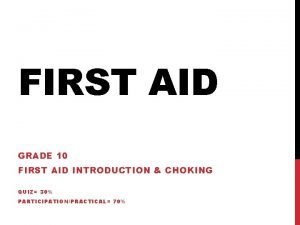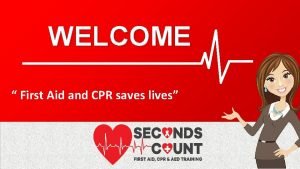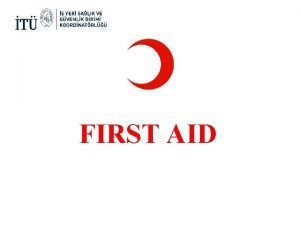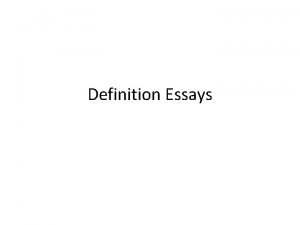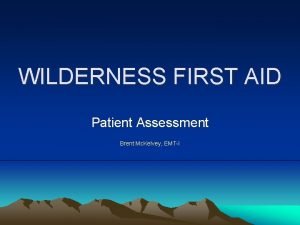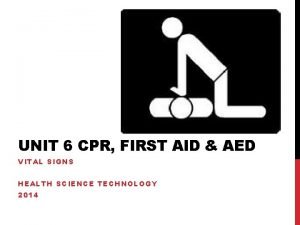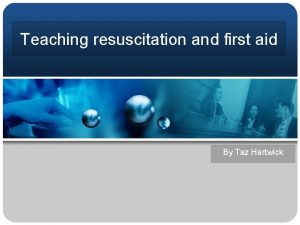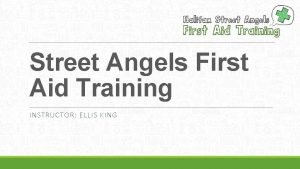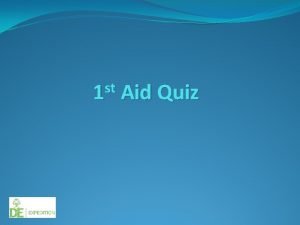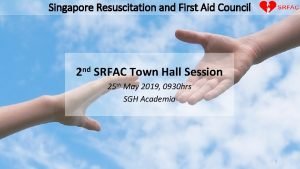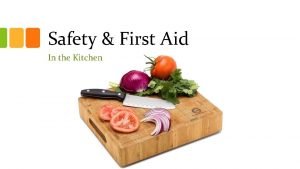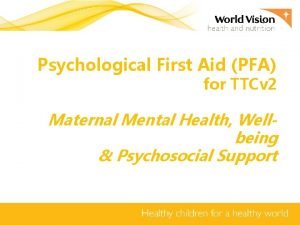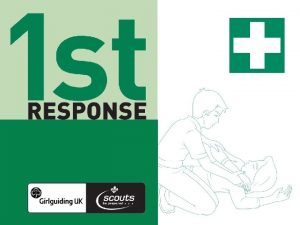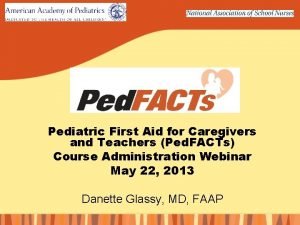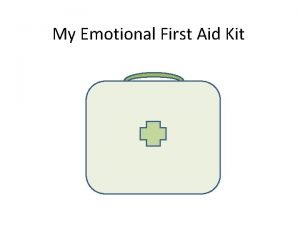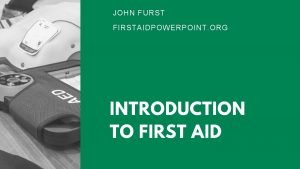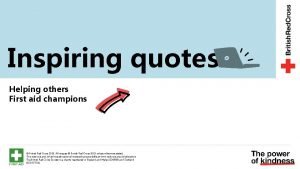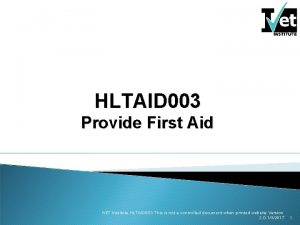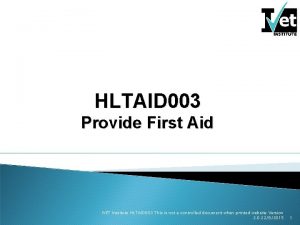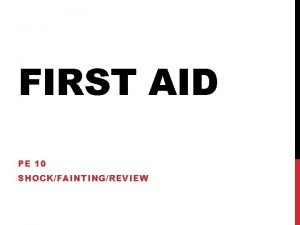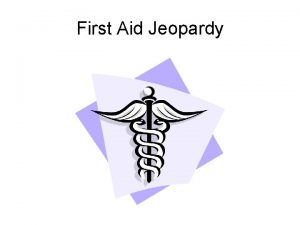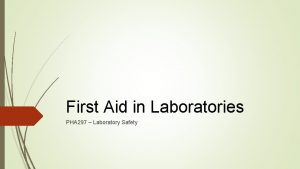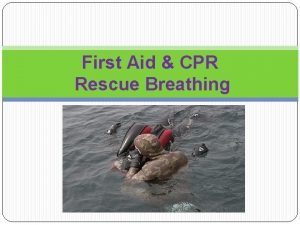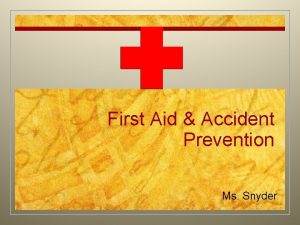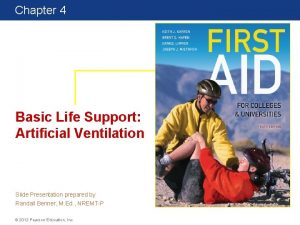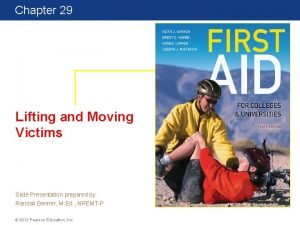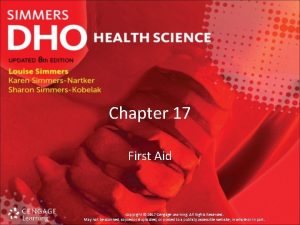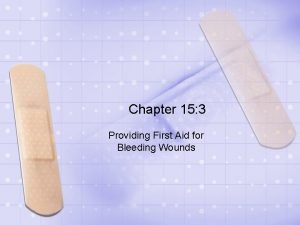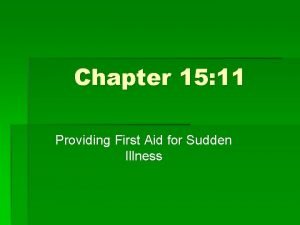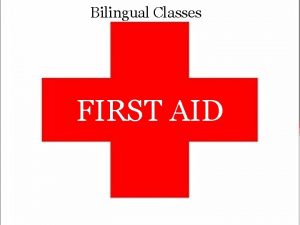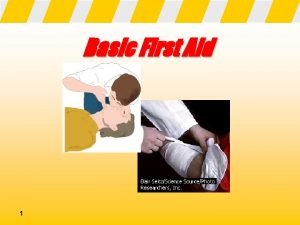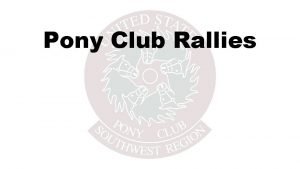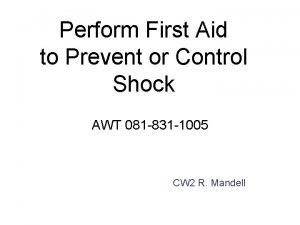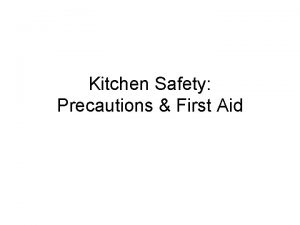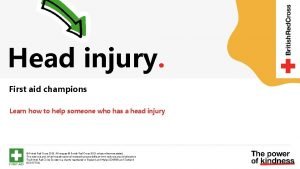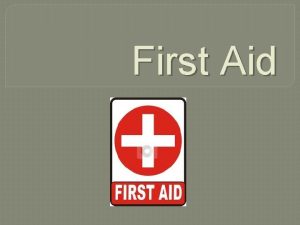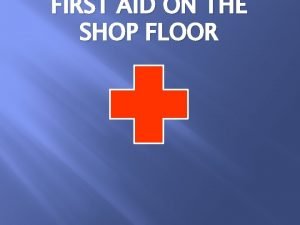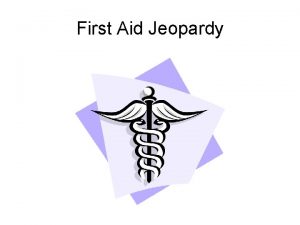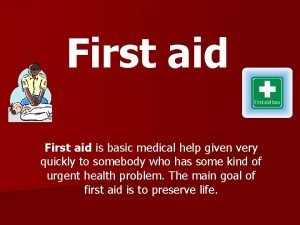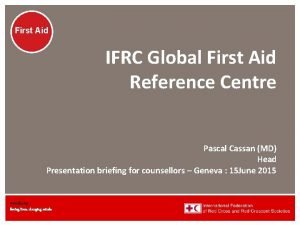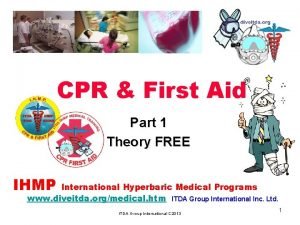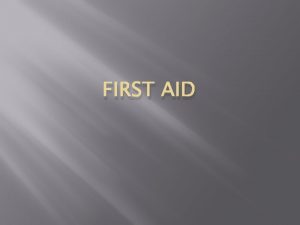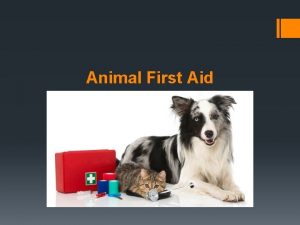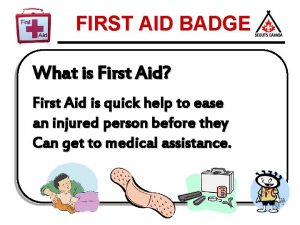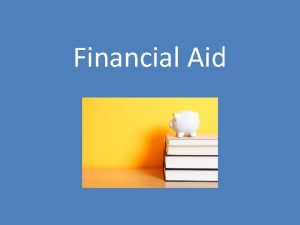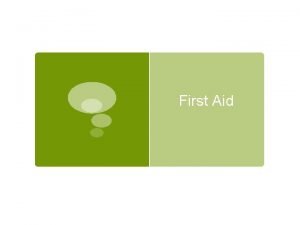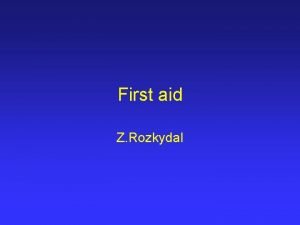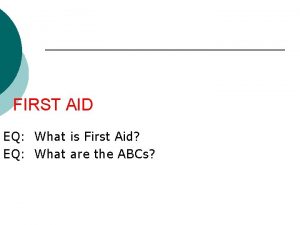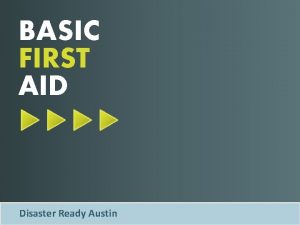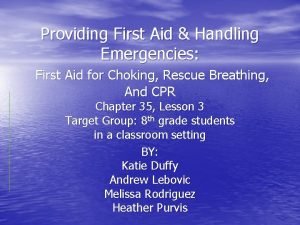FIRST AID Definition of first aid In any




























































- Slides: 60

FIRST AID

Definition of first aid: • In any case reduces life in danger, until they obtain the assistance of health professionals, person who be casualty, is taken free drug application with meterials in there.

Life Recovery Chain : Prevention, Airway Control, Quick Search, Early Advanced Care

Communication • Telephone contact is provided after taking measures to prevent the death of injured. • First Aid communication principles: • The message was short, concise, and must be understood. • The time, location and type of accident, • The number of wounded and the situation should be reported. • If necessary, aid should be instructed.

Situations That Require First Aid • • Respiratory standstill Heart arrest Bleeding and shock Physical injury and ambustion Fracture, luxatio, torsio Poisoning cases Heat stroke ve congeal

Objectives of First Aid : • • Ensore of respriration Ensure of circulation Stop the bleeding Deal of shock Determined fractures Other operations Dispatch

ARTIFICIAL RESPIRATION • It saves lives. • It should start in the first 3 -5 minutes. • Patients should be made until it receives breath. • In adults 15 -20 per/min. • In children 30 -40 per/min. • Side lying position is taken when respiratory begin.

Breathing air to feel the movement of the cheek, chest and abdomen are evaluated by see you move with each breath.

The carotid pulse can be felt at the point between the larynx and the sternocleidomastoid muscle.

Pupillary reflex :

Dilate Pupil:

Myotik Pupil:

Anizokori:

ENSURING BREATHING APPLICATIONS Airway is opened. Oral cavity is cleaned. Dentures are removed. Foreign bodies are removed. • If required artificial respiration made. • •

tongue passage tongue Back of tangue caused of relaxation of muscle leads to blockage of the air way in patients with unconscious.


HEART MASSAGE Of Fixed heart To do in first 3 -5 min. Patient is lied back on hard and flat ground. pressure is applied to the middle of the chest bone 1/3 • Breastbone pressed until 3 -5 cm will fall • the massage is done in 60 -80 minutes • massage applied to heart stars. • •

Both cardiac massage and artificial respiration • • One or two people: Control of conscious, If conscious is off, 112 is called. Respiratory control is done Artificial respiration is done 2 times Pulse control is done Cardiac massage is performed 30 times Artificial respiration is done 2 times

Placement of the hands while pressing the chest of closed cardiac massage(a) Slide your hand close to the patient's foot, index and middle fingers until the recess in the middle of the patient's chest during the spring of rib(b) Place the middle finger and index finger on the lower end of the sternum religion during recess(c) Placed next pulm of the second hand to hand index finger to the first lower end of the sternum. (d) first hand on the sternum lifted from recess on quinine and place in parallel.

Sternum Heart Lungs a. ) Press and release periods should be of equal duration and rhythmic. palm of hand External cardiac massage done by shouldnt withdraw from the sternum. b. ) subverting with pressing down both arms Pressure must always be between the along the sternum 5 -6 cm. sternum rest breaks to return to its normal position.


Obstruction of the Airway by Foreign Matter • • • Risk Factors Great big bite and inviolate High alcohol level in blood Prosthodontics Playing sneezing with bite or other substance are in mouth


Bleeding: • Blood is extravasation. • 20% of blood loss is life-threatening.

External bleeding: 1 -Arterial bleeding : Light red, ıntermittent bleed. 2 -Venous bleeding: Dark red, spread into the bloodstream. 3 -Capillary bleeding: blood is the form of leaks.

Arteriel flow-light red capillary flow venous flow dark flow

Internal bleeding : 1 -into head 2 -into the chest 3 -into the abdomen 4 -into the pelvis 5 -In broken bones location

Stop Bleeding With First Aid Supplies • With pressure dressing. • Tourniquet method : – The method of choice recently. – One region is applied to the bone. – 5 -7 cm of the material used. – 5 -10 sec in 20 minutes loosening. – Do not apply more than 2 hours. – Collar attached to the card.


A-Local Pressure B-Pressure Point C-Tourniquet

In tourniquet application steps: (a) 10 cm wide wrap around the bleeding point on the limb just a bandage. (b) Take a knot and place it on a stick. (c) Take on up to 2 nodes and rotate the stick until stops bleeding. (d) Determine the stick that shouldnt open.

(a)Pedicle torn piece of skin blood flow may be impaired if folded or bent. (b) the flap should be placed the normal location. (c) After a dressing made of pressures.

SHOCK : As a result of the deterioration of the blood supply to tissues and organs, circulation is reduced enough vital activities.

SHOCK : l Causes: lexcessive bleeding lcardiac insufficiency linjuries, burn lpain, excitements l. Poisoning l. Some infectious diseases l. The blood sugar decrease/ increase

SHOCK : • Symptoms: • a decrease in body temperature • Pale skin, cold sweat • increased heart rate, weight loss • Fast shallow breathing • Fatigue, restlessness • Loss of consciousness, fainting First aid: Bleeding is stopped. Shock position is taken. Body temperature is maintained. • Provide to calm and open the consciousness • Shipped. • •

Injury of Chest : • Difficulty breathing; taken in stable side position. • injuries in the chest, it closed immediately with a wet dressing. • Shock, shock position • Stuck object is not removed • Rib fractures is determined • Light, frothy blood with cough.

stuck in blood vessels stuck in the lungs injury site stuck in heart protruding intercostal muscles air-filled pleural space collapsed lung diaphragm

pleural cavity welled blood Haemothorax lungs the parietal pleura injure location heart visceral pleura collapsed lung hemopneumothorax Air in the pleural space injures location Blood in the pleural space


Abdominal injuries: • Symptoms • Bleeding, shock • Pain, nausea and vomiting • prolapse of the abdominal organs • stiffness of the abdominal wall • First aid: • Cold applied. • Top of the bodies covered. • Position relative to the wound shape • not food and beverage • Shipped

COMA: Brain damage as a result of sensory perception of corruption is deep unconsciousness shaped body remains motionless. Coma phases: excitation half asleep semi-conscious coma state

Fainting: As a result of poor circulation shortterm self is seen by the brain is deprived of blood pass. • Causes : – excessive bleeding – Heart failure l Tizzy l Fatigue l Excessive loss water

Fainting: • Symptoms: • Sudden loss of consciousness • pale face • increase in pulse • Increased respiratory rate • decrease in body temperature • Sweating • First aid • Shock position is taken. • Sensory organs are stimulated. • The side position is given • Loosen tight clothing. • Enough be rested. • If necessary , shipped.

Be Frozen and cold hit • Symptom: Weakness, lethargy, sleepy, confusion • First aid: – Body temperature is gradually raised. – Light massage is done. – Sleep is blocked. – Do not let smoking and drinking alcohol. – Hot drinks are drunk. – Shipped.

BURN: • • • Light burns: Keep under water until pain stops If remove the jewelry before swelling start Cover the burn with a clean cloth If serious burns ın addition to these : Keep the burn area above Remove the limb burns high Remove the scalding wet clothes Take measures against shock Open the airway if consciousness is closed

Cold burns • People exposed to high concentrations of the product can realize overwhelmed due to loss of consciousness. • Just to be removed to a fresh air location. Should be kept in a warm environment and at rest. • The patient's consciousness, breathing and circulation should be checked. • Definitely should be checked by a doctor.

• Skin / eye contact • With plenty of warm water contact with the skin of the affected area should be washed for at least 15 minutes. • Dense tissue freezing, cold burns and blistering of the skin surface of said patient should be taken to a health care provider immediately.

Fracture: Impact result is the deterioration of bone 1)compound fracture 2) closed fracture 3) Compression fracture

Fracture : • • • Symptom: Pain, swelling, bruising limitation of movement Deformity Creaking sound

Fracture : first aid: -Bleeding and shock prevention. -Open fractures are closed. -It is determined by the splint. -Cold application is made.

radial nerve low hand

brachial artery median nerve

Wounded transport methods : • A-carrying with person: – – – 1 -back transport 2 -firefighters method 3 -creep method 4 -carry on back 5 -be support • B-carrying with two people: – 1 -transport with four hands – 2 -transport with two hands – 3 -’’Tezkereci’’ method – 4 -transportation with stretcher

Wounded transport methods:

Wounded transport methods Putting the patient on a stretcher with four people. Other people locate to stetcher when three people lifting the patient.

Carbon monoxide poisoning : CO in reduced oxygen carrying capacity of the blood. • Symptom: • • • Headache, dizziness Drowsiness, fatigue Blurring of consciousness Respiratory distress Nausea and vomiting • First aid: • Fresh • Artificial respiration • consignment

poisoning through the digestive way • • Symptoms Nausea, vomiting, abdominal pain, cramps, shock First aid: If it is not before two hours, should be vomiting. If it is before two or more hours, should be consume drink – IF – After two hours – Drink acıd or base – Consciousness is not over; do not induce vomiting.

poisoning through the skin : • Symptom: • Teeth marks, swelling, bruising, pain, nausea, vomiting, shock, difficulty breathing, weak pulse. • First aid: • Tourniquet connected, • The poison is flushed out. • Cold is applied. • The wound is closedwith a clean cloth.

Heatstroke and heat exhaustion. • Symptoms: • increase in body temperature, nausea, vomiting, weakness, sweating, weak pulse, shock • First aid: • Body temperature is lowered. • Water and salty ayran is drunk. • It received the shock position.

THANK YOU
 First aid merit badge first aid kit
First aid merit badge first aid kit There aren't any carrots
There aren't any carrots Any to any connectivity
Any to any connectivity Informational probes adalah
Informational probes adalah Three ps in first aid
Three ps in first aid First aid definition
First aid definition First aid definition
First aid definition Neasden and greenhill park medical centre
Neasden and greenhill park medical centre Put first things first definition
Put first things first definition Wilderness first aid patient assessment form
Wilderness first aid patient assessment form Air cadet first aid badge
Air cadet first aid badge Vital signs cpr
Vital signs cpr Unit 15:4 providing first aid for shock
Unit 15:4 providing first aid for shock Coyne first aid
Coyne first aid Chample first aid
Chample first aid First aid angels
First aid angels Three ps in first aid
Three ps in first aid Bcls singapore pdf
Bcls singapore pdf First aid kitchen
First aid kitchen Electronics merit badge powerpoint
Electronics merit badge powerpoint Psychological first aid
Psychological first aid Preserve life first aid
Preserve life first aid Pediatric first aid for caregivers
Pediatric first aid for caregivers Emotional first aid kit ideas
Emotional first aid kit ideas John furst first aid
John furst first aid First aid list quotes
First aid list quotes Injury prevention, safety and first aid
Injury prevention, safety and first aid Hltaid 003
Hltaid 003 Hltaid
Hltaid Seabase first aid kit
Seabase first aid kit Rice first aid
Rice first aid What are the objectives of first aid?
What are the objectives of first aid? Pe shock
Pe shock First aid jeopardy
First aid jeopardy First aid in laboratory
First aid in laboratory Two-person human crutch
Two-person human crutch What is a secondary survey in first aid
What is a secondary survey in first aid Llf cpr
Llf cpr Pa wc bureau
Pa wc bureau First aid for heat stroke
First aid for heat stroke Cocwa
Cocwa Pearson
Pearson Shirt drag first aid
Shirt drag first aid Chapter 17:4 providing first aid for shock
Chapter 17:4 providing first aid for shock 17:4 providing first aid for shock
17:4 providing first aid for shock 16:3 providing first aid for bleeding and wounds
16:3 providing first aid for bleeding and wounds Chapter 17:11 providing first aid for sudden illness
Chapter 17:11 providing first aid for sudden illness Preserve life first aid
Preserve life first aid Fundamental
Fundamental Emergency care first aid and disasters
Emergency care first aid and disasters Chapter 28 first aid and emergencies
Chapter 28 first aid and emergencies Equine first aid kit pony club
Equine first aid kit pony club Perform first aid to prevent or control shock
Perform first aid to prevent or control shock Kitchen first aid
Kitchen first aid Red cross first aid champions
Red cross first aid champions Abc in first aid
Abc in first aid First aid for unconsciousness
First aid for unconsciousness First aid jeopardy
First aid jeopardy What is first aid answer
What is first aid answer Global first aid reference centre
Global first aid reference centre First aid theory
First aid theory




